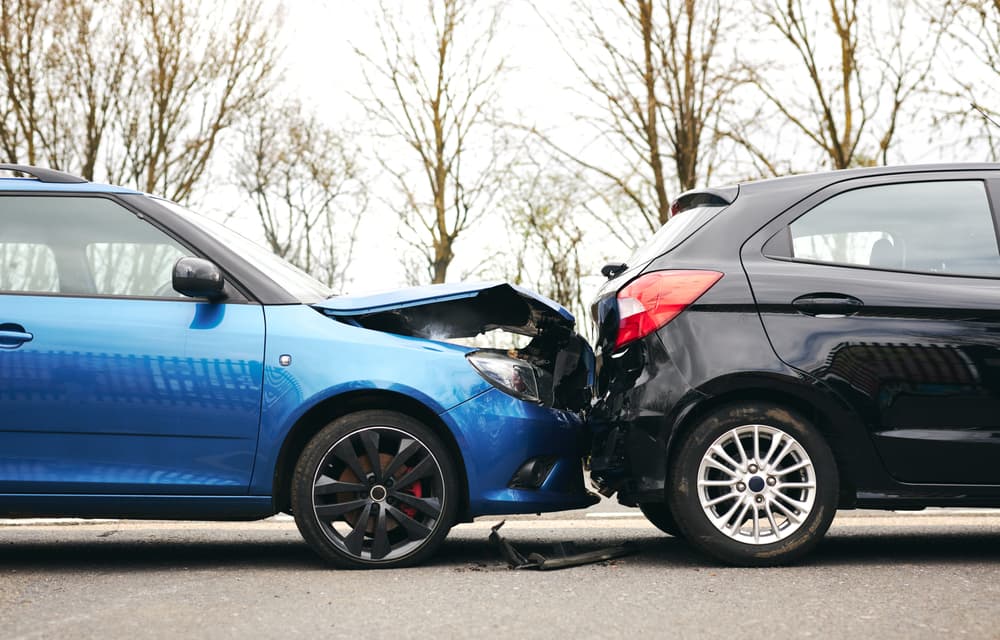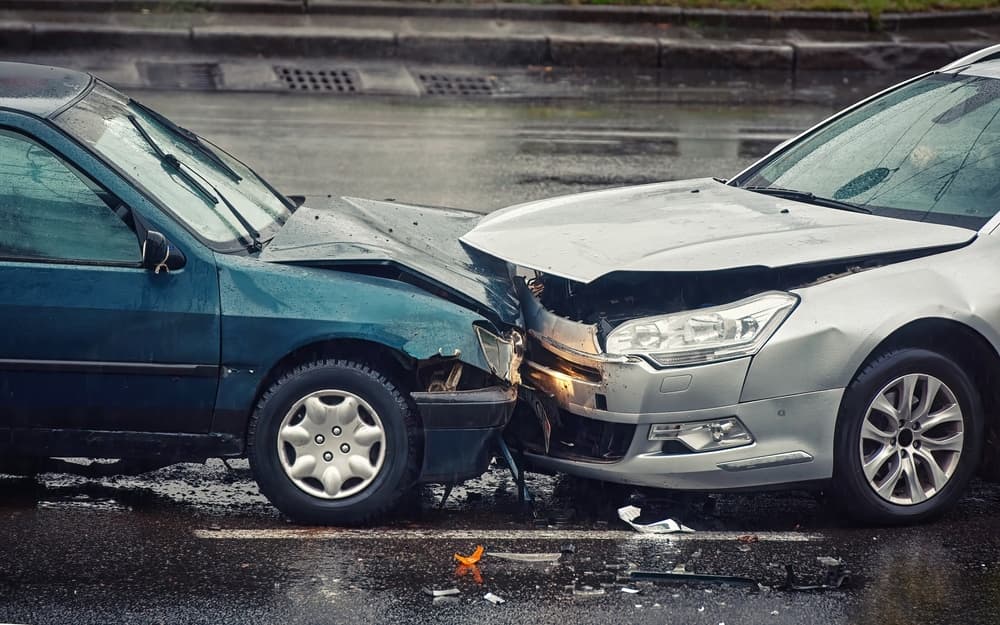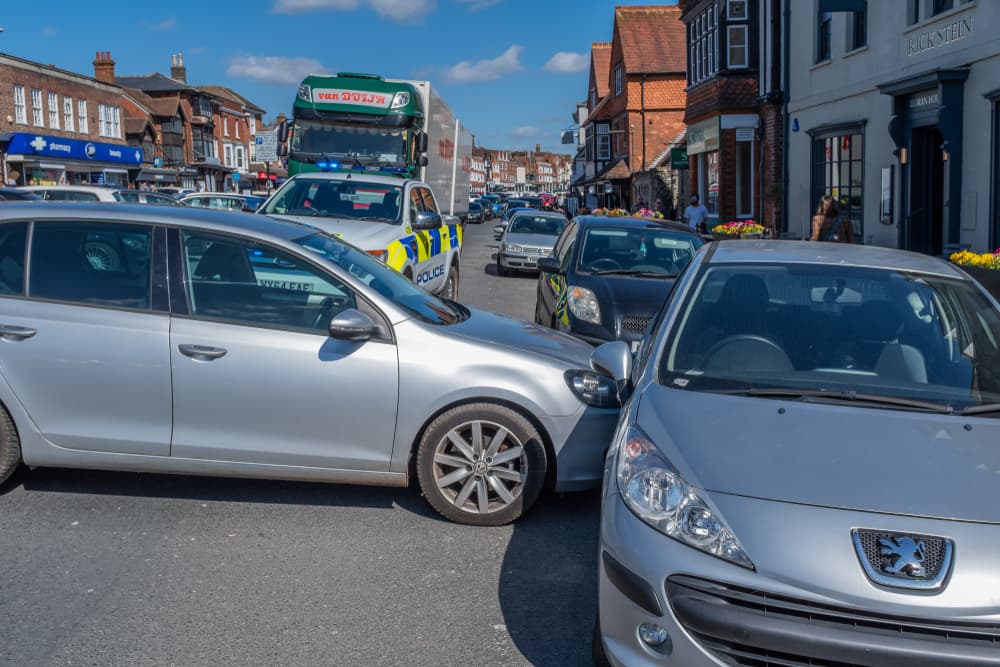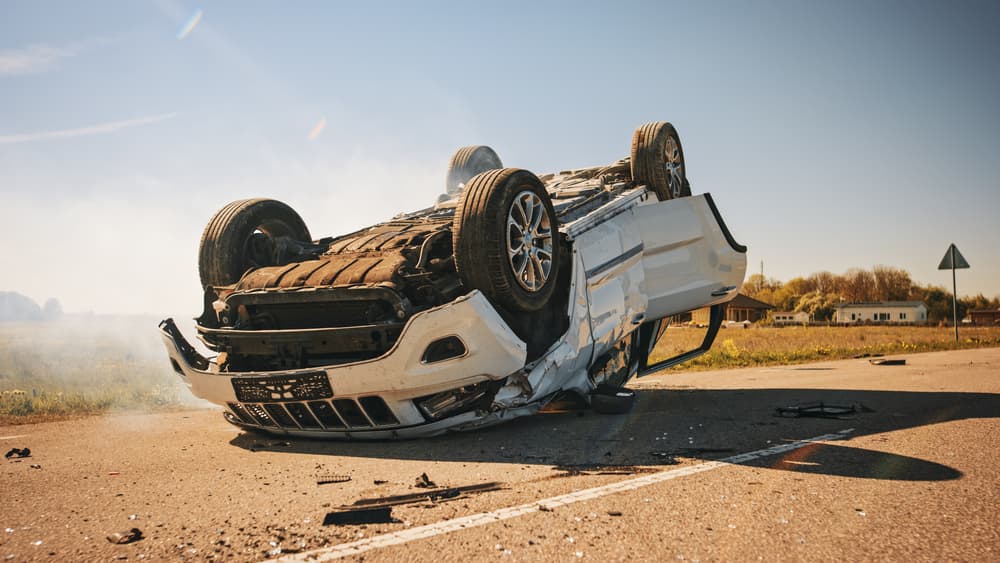In the blink of an eye, a routine drive can turn into a life-altering event. Car accidents are a stark reminder of the unpredictable nature of the road, and they happen to even the most cautious of drivers.
This blog sheds light on the various types of car accidents, providing you with insights into the distinctive characteristics of each scenario and the potential personal injury cases that may arise from them.
From rear-end collisions to T-bone accidents, rollovers to head-on crashes, our team of experienced New Orleans car accident attorneys is dedicated to helping you navigate the complex legal landscape of car accident claims. By familiarizing yourself with the different types of car accidents, you’ll better equip yourself to protect your rights and pursue the compensation you deserve after an unfortunate collision. So, fasten your seatbelt, and let’s explore the world of car accidents together.
Common Types of Car Accidents
Car accidents can occur in various ways, each with its own set of circumstances and potential causes. Here are some common types of car accidents:
Rear-End Collisions

A rear-end collision occurs when one vehicle strikes the back of another vehicle. These accidents typically happen when the following vehicle fails to stop or slow down in time to avoid a collision with the vehicle in front, often due to:
- Tailgating
- Distracted driving
- Sudden stops by the leading vehicle
- Adverse road conditions
Rear-end collisions can damage the vehicles involved and injure the occupants, particularly those in the vehicle that gets struck from behind.
Head-On Collisions

A head-on collision is a car accident where two vehicles traveling in opposite directions crash into each other, with the fronts of the vehicles colliding. These accidents typically occur due to factors such as driver error, impaired driving, overtaking in a no-passing zone, or crossing into the opposing lane. Head-on collisions often result in severe damage to the vehicles and can lead to life-threatening injuries or fatalities for the occupants due to the force of impact. They are considered one of the most dangerous types of car accidents.
T-Bone (Side-Impact) Collisions

A T-bone or side-impact collision is a type of car accident in which the front of one vehicle strikes the side of another vehicle, creating a T shape at the point of impact. These accidents typically occur at intersections when one vehicle fails to yield the right-of-way, runs a red light, or otherwise enters the path of oncoming traffic.
T-bone collisions can result in significant damage to the vehicles involved and can cause serious injuries or fatalities to the occupants of the impacted vehicle, as the side of a vehicle offers less protection than the front or rear.
Rollover Accidents

A rollover accident is a type of car crash in which a vehicle tips over onto its side or roof. These accidents often happen when a vehicle loses control, such as during sharp turns, abrupt maneuvers, or due to factors like high speed, top-heavy design, or adverse road conditions.
Rollover accidents can result in severe injuries or fatalities, as they often involve multiple impacts as the vehicle rolls, and the roof and side structures may not provide as much protection as the front or rear of the vehicle. SUVs and trucks with a high center of gravity are more prone to rollovers.
Single-Vehicle Accidents
Single-vehicle accidents are car accidents that involve only one vehicle. These accidents occur when a single vehicle runs off the road or collides with an object, such as a tree, pole, guardrail, or barrier. They can result from factors like driver error, speeding, distracted driving, impaired driving, adverse weather conditions, or mechanical failures.
In single-vehicle accidents, the vehicle itself is the only one involved, and the outcome can vary from minor damage to severe injuries or fatalities, depending on the circumstances and the speed of impact.
Multi-Vehicle Pileups
Multi-vehicle pileups, also known as chain-reaction accidents, are car crashes involving multiple vehicles, typically occurring on highways or freeways. These accidents often start with one initial collision, which sets off a chain reaction as other vehicles become involved due to their inability to stop in time or avoid the collision.
Multi-vehicle pileups can result from factors like low visibility, adverse weather conditions, distracted or impaired drivers, and high-speed driving. They can lead to extensive vehicle damage and injuries to numerous people, making them particularly dangerous and challenging for emergency responders to manage.
Sideswipe Accidents
A sideswipe accident is a type of car collision in which two vehicles traveling parallel to each other make contact with their sides. These accidents often happen when one vehicle drifts into the lane of another without enough space, resulting in a glancing impact. Sideswipe accidents typically occur at high speeds on highways or during lane changes. While they may result in minor to moderate vehicle damage, they often do not lead to serious injuries unless they cause a loss of control or result in secondary collisions.
Hit-and-Run Accidents
A hit-and-run accident is a car collision in which one party involved in the accident leaves the scene without stopping to provide their identification, insurance information, or assistance to the other party or parties involved. Hit-and-run accidents can occur in various forms, such as when a driver hits another vehicle, a pedestrian, or property like a parked car, and then flees the scene.
These illegal actions can result in criminal charges for the fleeing driver. Hit-and-run accidents can make it challenging for victims to seek compensation or medical help and often lead to legal consequences for the responsible party.
Parking Lot Accidents
Parking lot accidents are car accidents that occur in parking lots or similar areas designated for parking. These accidents typically involve low-speed collisions and often result from factors like driver inattention, backing out of parking spaces without checking, failing to yield the right of way, or not observing traffic rules within the parking area. While parking lot accidents tend to cause minor vehicle damage, they can still lead to disputes between drivers and may involve insurance claims to cover the costs of repairs.
Drunk Driving Accidents
Drunk driving accidents occur when a person operates a vehicle under the influence of alcohol or drugs, impairing their ability to drive safely. These accidents often result in impaired judgment, slower reaction times, and poor coordination, increasing the risk of collisions.
Drunk driving accidents can lead to severe injuries or fatalities for the impaired driver, passengers, other drivers, and pedestrians involved.
Driving under the influence is illegal and can result in criminal charges, as well as civil liability for the at-fault driver. Efforts to prevent drunk driving include strict laws, sobriety checkpoints, and public awareness campaigns.
Distracted Driving Accidents
Distracted driving accidents occur when a driver’s attention is diverted from the task of driving due to activities such as texting, talking on the phone, eating, or using in-car entertainment systems. These distractions can lead to reduced focus on the road, slower reaction times, and an increased risk of accidents.
Distracted driving accidents can result in injuries, fatalities, and property damage. Many countries and states have implemented laws and campaigns to raise awareness and prevent distracted driving to enhance road safety.
Weather-Related Accidents
Weather-related accidents are car crashes that occur due to adverse weather conditions such as rain, snow, ice, fog, or heavy winds. These conditions can reduce visibility, create slippery roads, and increase the risk of accidents.
Weather-related accidents often result from factors like reduced traction, reduced visibility, and difficulty in controlling the vehicle. These accidents can lead to a range of injuries and vehicle damage, and drivers are encouraged to exercise caution and adapt their driving behavior to the prevailing weather conditions to reduce the risk of accidents.
Construction Zone Accidents
Construction zone accidents occur in areas where road construction or maintenance is taking place. These accidents can involve vehicles colliding with each other, construction equipment, or roadwork structures. Factors contributing to construction zone accidents include reduced speed limits, lane shifts, narrow lanes, and changes in road conditions, all of which require heightened driver attention and caution.
Construction zone accidents can result in injuries, fatalities, and significant delays. Drivers are advised to adhere to posted speed limits, follow construction zone signs and signals, and be especially alert when navigating these areas to enhance safety for themselves and road workers.
Animal-Related Accidents
Animal-related accidents occur when a vehicle collides with an animal, such as a deer, moose, or livestock, on the road. These accidents often happen in rural or wooded areas, especially during dawn and dusk when animals are more active. Such collisions can result in damage to the vehicle, injuries to the occupants, and harm to the animal involved.
Drivers are advised to be cautious in areas prone to animal crossings, reduce speed when appropriate, and use high beams at night to enhance visibility and minimize the risk of animal-related accidents.
Fatigue-Related Accidents
Fatigue-related accidents occur when a driver falls asleep or loses alertness due to drowsiness or exhaustion while operating a vehicle. These accidents are often the result of sleep deprivation, long hours of driving, or driving at night. Fatigue impairs a driver’s reaction time, decision-making, and overall ability to drive safely, increasing the risk of accidents.
Fatigue-related accidents can result in injuries or fatalities and are preventable by getting adequate rest before driving, taking breaks during long trips, and recognizing the signs of drowsiness to avoid getting behind the wheel when fatigued.
What Should I Do After a Car Accident?
After a car accident, take immediate steps to ensure your safety, the safety of others, and protect your legal and financial interests.
Here’s what you should do:
- Ensure Safety: First and foremost, check yourself and others for injuries. If injuries require immediate medical attention, call 911. If the vehicles are drivable and it’s safe to do so, move them to the side of the road to prevent further accidents.
- Call the Police: Contact the local police or appropriate law enforcement agency to report the accident. You may need an official accident report for insurance claims and legal purposes.
- Exchange Information: Exchange contact and insurance information with the other driver(s) involved in the accident. Get the names, phone numbers, addresses, driver’s license numbers, and insurance policy details.
- Document the Scene: Take photos of the accident scene, including the vehicles’ positions, any damage, road conditions, and any road signs or traffic signals. Note the date, time, and location of the accident.
- Gather Witness Information: If there are witnesses to the accident, collect their contact information. Their statements can be valuable later on.
- Notify Your Insurance Company: Report the accident to your insurance company as soon as possible. Provide them with basic details about the accident. Follow the company’s instructions regarding filing a claim, but do not offer any statements or sign any documents before consulting a lawyer.
- Seek Medical Attention: Even if you don’t feel injured right away, Seek medical attention as some injuries may not manifest immediately. A medical examination can document any injuries for insurance or legal claims.
- Preserve Evidence: Do not repair or dispose of your vehicle until you’ve documented the damage and consulted with your insurance company.
- Cooperate with Authorities: Provide any information requested by law enforcement officers, and do not admit fault or guilt. Let the authorities determine liability.
- Contact an Attorney: If you’ve suffered injuries or significant property damage, consult with a personal injury attorney. They can provide legal advice and help you navigate the claims process.
- Keep Records: Maintain records of all medical treatment, expenses, and any communications related to the accident and insurance claims.
- Follow Your Doctor’s Recommendations: Follow your doctor’s prescribed treatment plan to ensure a full recovery.
- Be Cautious with Statements: Never discuss the accident on social media or with the other party’s insurance company. Consult your attorney before making any statements.
Prioritize your safety and well-being after a car accident. Following these steps can protect your legal rights and ensure you receive the necessary support, whether through insurance claims or legal action if needed. Always consult a car accident lawyer to understand your options and rights, especially in cases of serious injuries or disputes with insurance companies.
Injured in a Car Accident? Talk to a Lawyer to Protect Your Rights.
In the ever-moving world of the open road, understanding the different types of car accidents is not just knowledge, it’s empowerment. Your rights and well-being matter after a car accident. Whether it’s a rear-end collision, a T-bone crash, a rollover, or any other type of car accident, the personal injury lawyers at Wright Gray Law Firm are here to support you every step of the way. Contact us today at (504) 616-6462 or through our online form for your free consultation.
